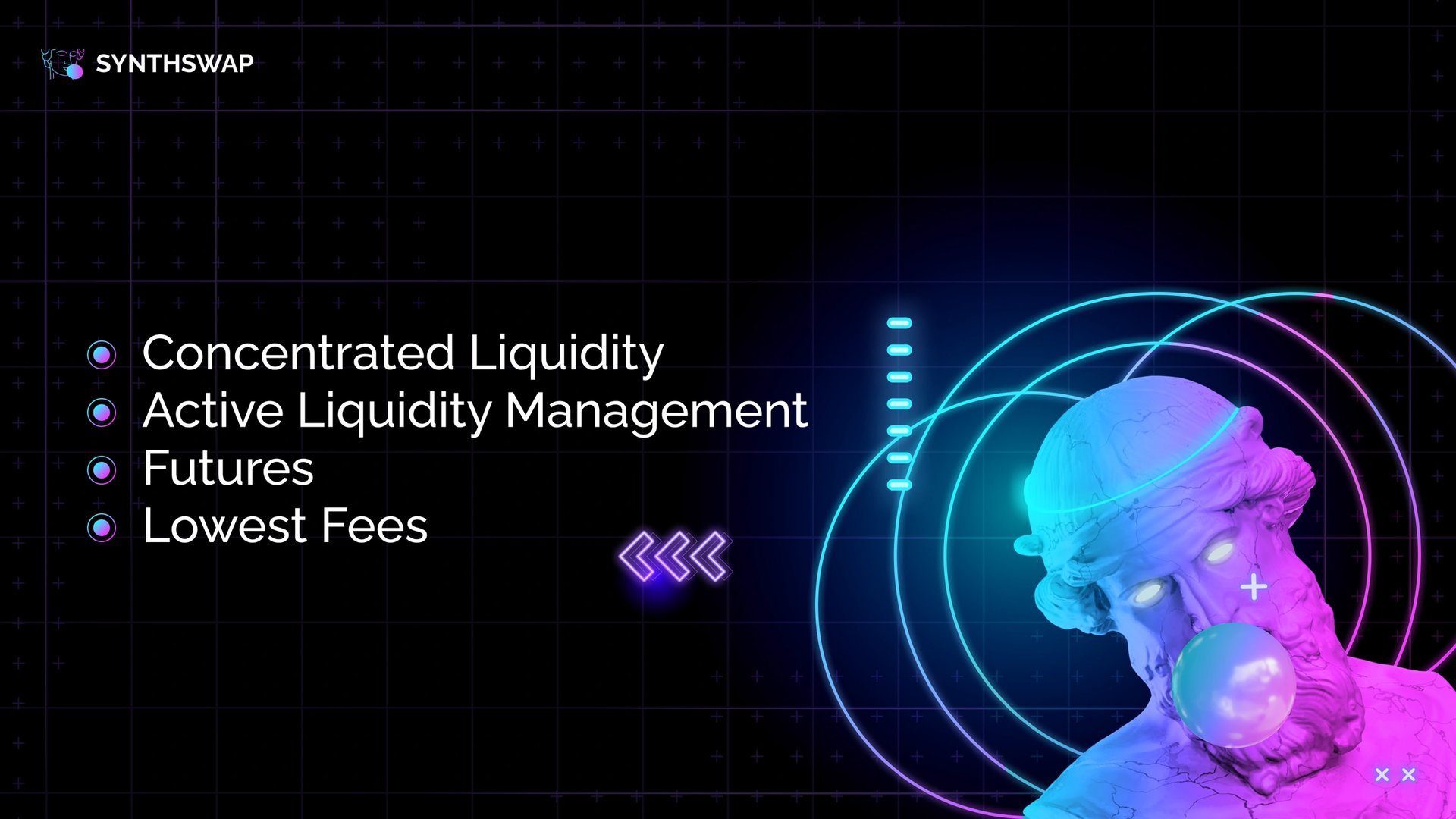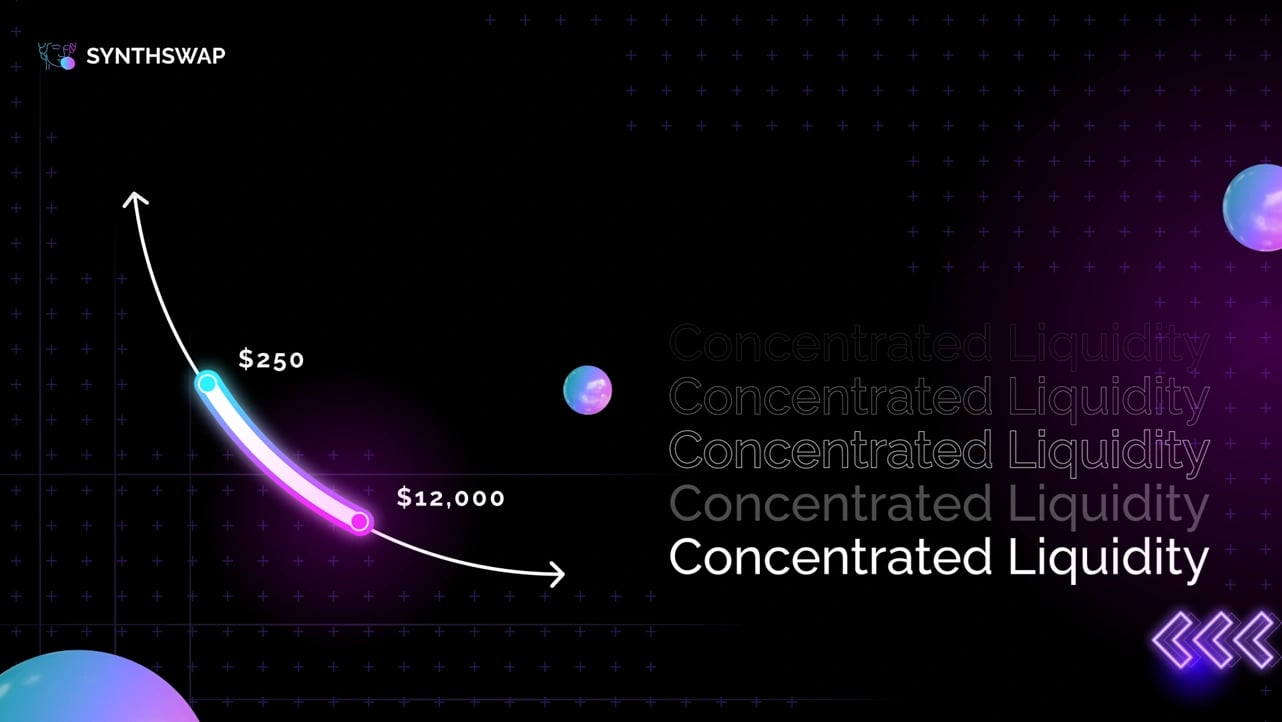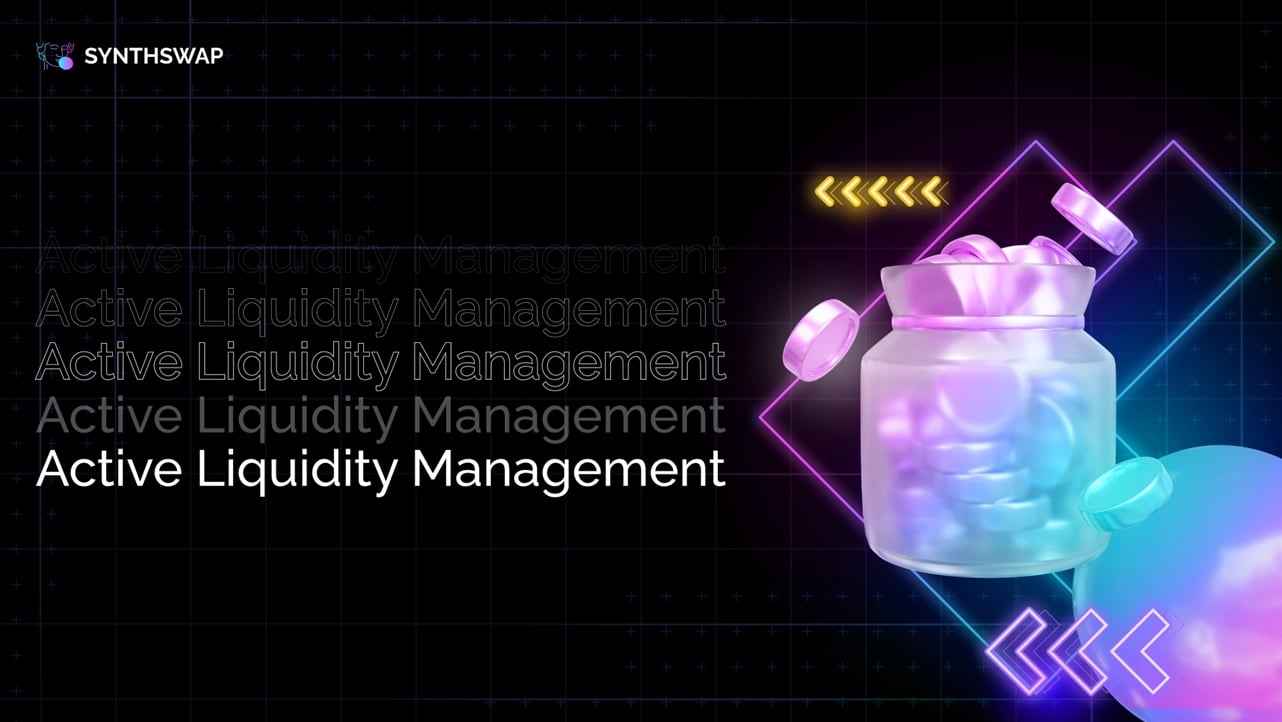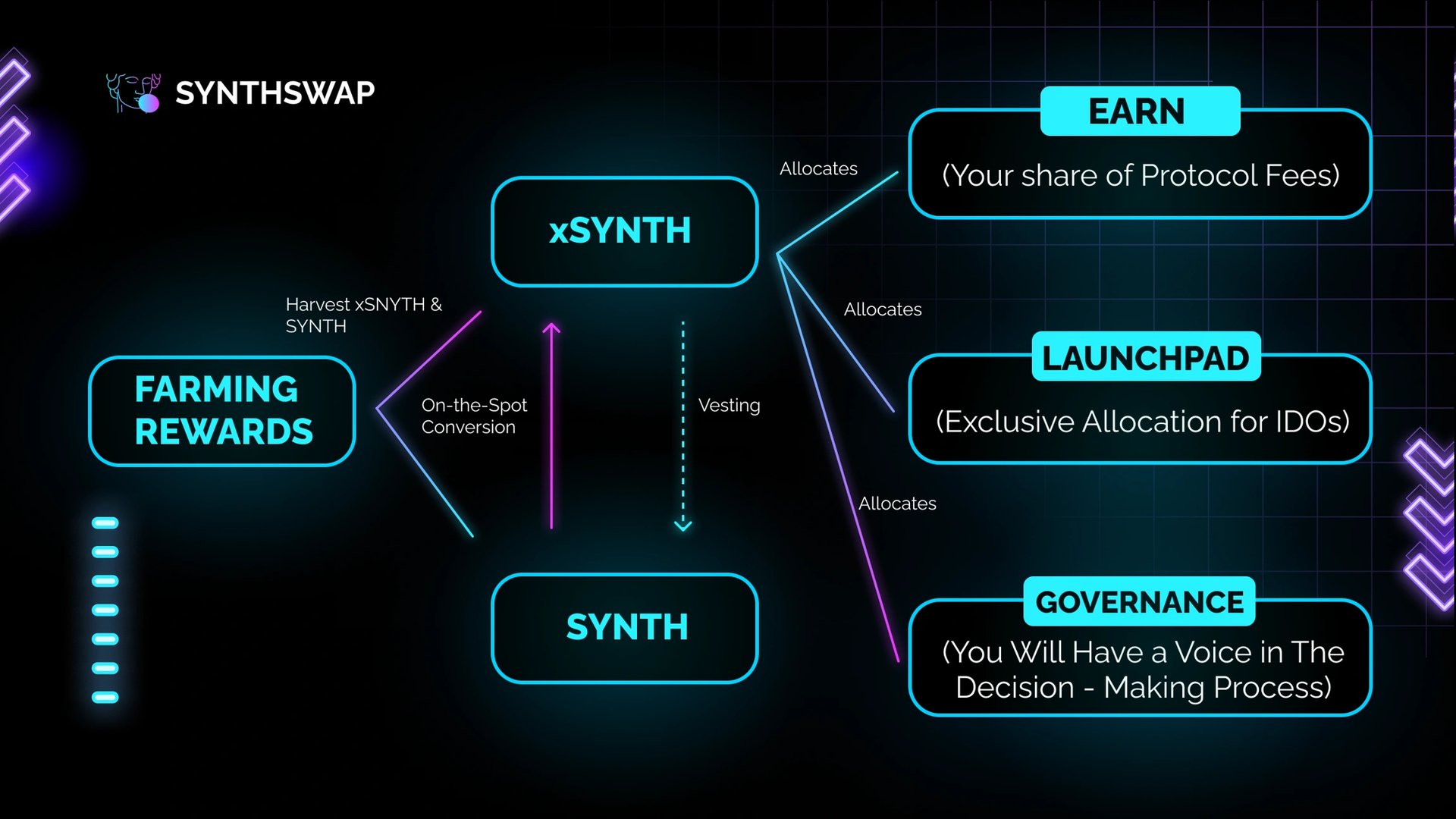위키 구독하기
Share wiki
Bookmark
Synthswap
Synthswap
Synthswap은 Base 생태계에서 구축된 탈중앙화 거래소(DEX)이며, 거래 및 수익 농사를 위해 자동화 시장 조성자(AMM) 모델을 사용합니다. 비보관형 프로토콜로 운영되며, 낮은 거래 수수료와 사용자 거버넌스 및 효율적인 유동성 관리에 중점을 둡니다. [1]
개요
Synthswap은 Base 생태계 내의 탈중앙화 거래소(DEX)이며, 자동화 시장 조성자(AMM) 모델을 사용합니다. 비보관형 프로토콜을 사용하여 사용자는 거래하고 수익 농사에 참여할 수 있습니다. Synthswap은 직접 거래를 실행하거나 청산 서비스를 제공하지 않지만, 프로토콜에 대한 정보를 제공하여 사용자가 운영 방식과 더 넓은 생태계를 이해하도록 합니다. [2][3]
이 플랫폼은 사용자의 암호화폐 자산을 통제하거나 관리하지 않으며 거래에는 관여하지 않습니다. 또한 탈중앙화에 중점을 두고 타사 리소스를 보증하지 않습니다. 주요 기능으로는 집중적이고 활동적인 유동성 관리를 통해 달성되는 낮은 거래 수수료, 효율성을 최적화하고 스테이킹 및 수익 농사의 보상을 향상시키는 것이 있습니다. [2][3]
Synthswap은 거버넌스 투표를 통한 커뮤니티 참여를 강조하여 사용자가 프로토콜 변경에 영향을 미칠 수 있도록 합니다. 낮은 수수료, 효율적인 유동성 및 커뮤니티 중심 거버넌스에 중점을 둔 탈중앙화된 사용자 중심 경험을 제공하는 동시에 순수하게 정보 제공 역할을 유지합니다. [2][3]

기능
집중 유동성
집중된 유동성을 통해 유동성 제공자(LP)는 사용자 지정 가격 범위 내에서 자금을 할당하여 자본 효율성을 최적화하고 일시적 손실을 최소화할 수 있습니다. 모든 가격 범위에 걸쳐 유동성이 분산되는 XYK 공식과 같은 이전 모델과 달리, 집중된 유동성은 특정 구간 내에 자금을 집중시킵니다. 이를 통해 가격이 지정된 범위에 들어오면 LP는 유동성이 거래에 적극적으로 사용되므로 더 높은 거래 수수료를 얻을 수 있습니다. 이러한 접근 방식은 수수료 생성을 향상시키고 트레이더의 슬리피지를 줄이며 LP가 자신의 선호도에 맞게 포지션을 조정할 수 있도록 하여 유동성 관리를 더욱 효율적이고 수익성 있게 만듭니다. [4]

감마
감마를 사용한 능동적 유동성 관리(ALM)는 유동성 재조정 및 수수료 복리화를 자동화하여 사용자 자본 효율성을 최적화합니다. 감마는 재조정 및 포지션 설정과 같은 작업을 처리하여 탈중앙화 금융에서 집중된 유동성 풀 관리의 복잡성을 줄이는 비보관형 프로토콜입니다. 이러한 프로세스를 자동화함으로써 감마는 일시적 손실 및 지속적인 감독의 필요성과 같은 집중된 유동성의 과제를 완화하는 동시에 ERC-20 유동성 포지션 표현을 통해 더 많은 구성 가능성을 허용합니다. [5]

선물
선물 계약을 통해 트레이더는 기초 자산을 소유하지 않고도 암호화폐의 미래 가치를 예측할 수 있습니다. 트레이더는 상승장과 하락장 모두에서 이익을 얻을 수 있으며, 롱 포지션은 가격 상승으로부터, 숏 포지션은 가격 하락으로부터 이익을 얻으려고 합니다. Synthswap에서 사용자는 최대 x50 레버리지를 사용하여 선물 거래에 참여하여 시장 주문 또는 지정가 주문으로 롱 또는 숏 포지션을 열 수 있습니다. 이 플랫폼은 가격 영향이 없는 스왑도 지원하여 거래 전략 관리의 유연성을 제공합니다. 주요 위험에는 트레이더의 포지션에 반하는 가격 변동으로 인한 잠재적 손실이 포함됩니다. [6]
SYNTH
Synthswap의 네이티브 토큰인 SYNTH 토큰은 분산 및 공정성을 목표로 하는 공정 출시 모델을 따릅니다. 팀이나 투자자에게 초기 할당이 없으며, 토큰은 시간이 지남에 따라 전체 공급량을 줄이기 위해 선형 배출과 디플레이션 메커니즘을 사용하는 고정 공급량을 사용합니다. [7]
토큰 경제
SYNTH는 최대 250,000개의 토큰 공급량을 가지며 다음과 같은 할당을 가지고 있습니다. [7]
- 유동성 인센티브: 35%
- 핵심 기여자: 25%
- 개발/마케팅: 20%
- 생태계/파트너: 15%
- 프로토콜 유동성: 5%
xSYNTH
xSYNTH는 SYNTH 프로토콜에 연결된 양도 불가능한 에스크로 토큰입니다. 이는 스테이킹된 SYNTH를 나타내며 수익 공유, 거버넌스 및 런치패드 할당에 사용됩니다. 스테이킹된 xSYNTH를 통해 사용자는 보상을 얻고, 프로토콜 수익에 참여하고, 거버넌스 결정에 영향을 미칠 수 있습니다. 보상은 현재 사이클 쌍에 따라 매월 다릅니다. 또한 스테이킹된 xSYNTH는 플랫폼의 런치패드에서 프로젝트 할당 기회를 증가시킵니다. xSYNTH는 180일 후에 완전 전환이 가능하거나 14일 후에 부분 전환이 가능하며, 나머지 SYNTH는 소각됩니다. [8]

파트너십
- Algebra
- Axelar
- PeckShield
- Rabby Wallet
- Firebird Finance
- Kado
- Yahoo! Finance
- Bloomberg
- Cointelegraph
잘못된 내용이 있나요?
